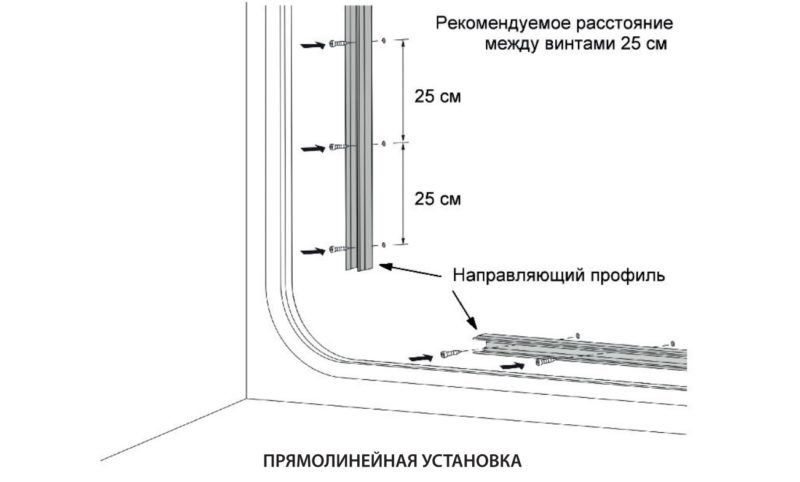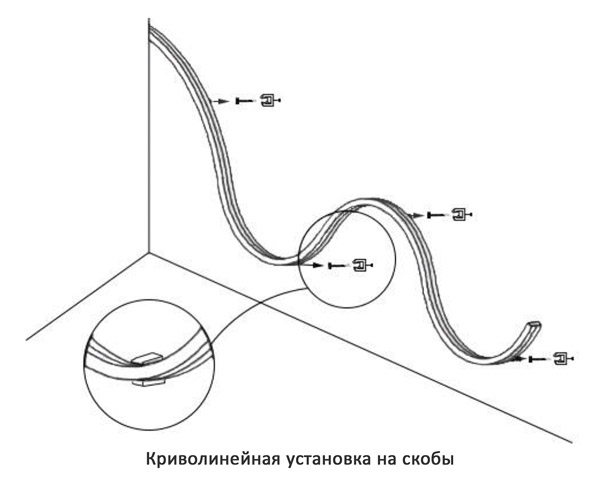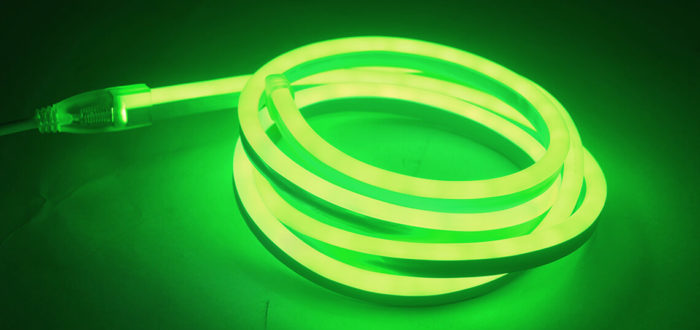How to properly connect a neon strip
Flexible neon became widespread relatively recently. Now it is actively used in various fields, replacing the usual neon lamps. Flexible elements are easy to install, virtually no need for maintenance, and in terms of power they are superior to LED strips.
What is a flexible neon
Flexible Neon 220V is a line of series-connected LEDs, placed in a solid matte tube. With the help of such devices you can organize backlighting or create a variety of inscriptions and drawings. Includes:
- A flexible shell of silicone or polymeric materials, which effectively protects the internal elements from exposure and forms the desired shade of glow.
- LEDs. Small-sized luminous devices that convert incoming electricity into bright light.
- Wiring. Connects the diodes to each other and supplies the voltage.
Varieties of
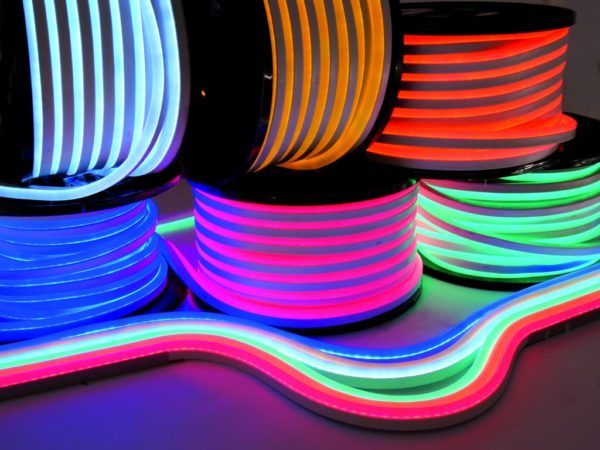
Several types of elements are distinguished:
- Classic designs. The most popular models, used by a large number of consumers.
- Professional. They are durable and used by designers to create backlighting.
- Low-voltage. Available in 24 V and 12 V. They are used in low-voltage equipment.
For the creation of advertising designs, elements of small thickness with bright hues are best suited. Design exteriors are implemented using traditional neon with a circular cross section. Devices can last more than 10 years even in the most difficult conditions.
On the market you can find a flexible neon economy class. The elements use low-quality LEDs, so do not count on long-term use.
Neon on 220 V is characterized by a smooth glow without flickering, flexibility, high reliability of the protective layer. Elements are resistant to mechanical stress, excessive dust and high humidity.
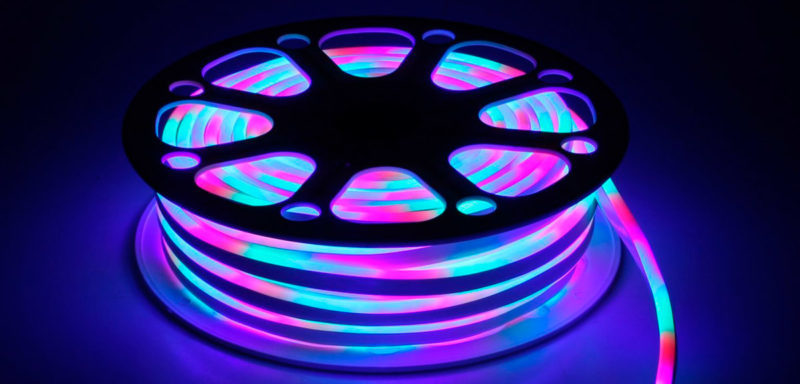
Separate consideration should be given to flexible RGB neon. A special feature of this lighting is the ability to adjust the color at any time. It is controlled by controllers, which can be built into the circuit or have a remote signal unit.
In addition to constant color, it is possible to include a mode of smooth flow of one shade into another. The processes are controlled by algorithms built into the system.
RGB elements are actively used for highlighting buildings, parks, advertising structures, interiors and cars. They can be used to organize amazing stage scenery, which is actively used by theaters and concert halls.
A separate group of white flexible cords. They are very simple in design and can be used to light objects. With their help, you can easily emphasize the relief of ceilings, mark an emergency situation on the road.
Models emitting white light are able to function for a long time, almost without changing their characteristics.
Applications
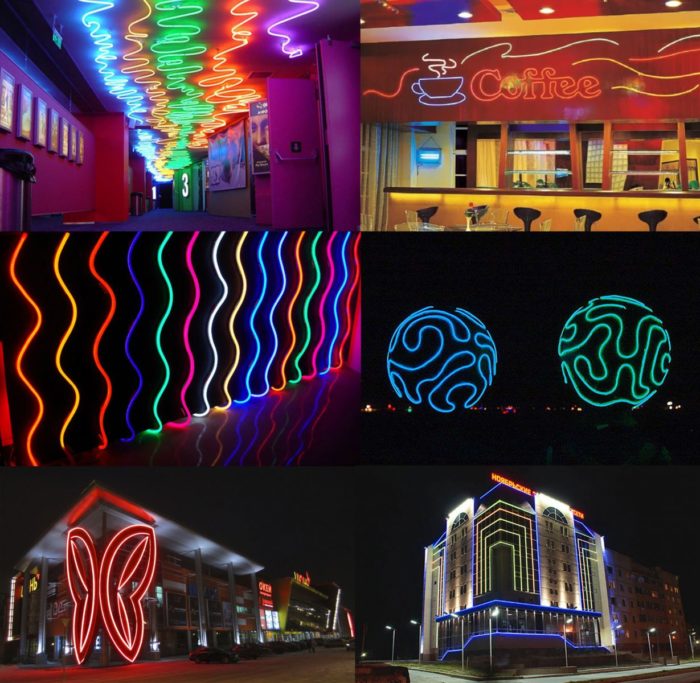
Most often, neon LED cords are used in the following areas:
- Car design refinement. Neon is mounted both inside the cabin and along the body.
- Backlighting of parks, squares and yards.
- Organizing illumination of swimming pools and fountains.
- Building decoration, illumination of the adjacent territory.
- Advertising banners, signs and posters.
- Road signs.
- Design of clubs, restaurants, bars and other public facilities.
Now even private owners of houses or apartments are trying to equip interiors with lighting systems. You can even find flexible neon as an element of clothing.
Connection and installation of neon ribbon
Connecting the flexible neon can be done by anyone after a careful study of the instructions.
Flexible neon is connected to the 220 V mains through an adapter. It is desirable to use only original components from reputable manufacturers so that there are no problems with the use of backlighting in the future. It is important to observe safety precautions when working.
Unusual neon LED strip
How to cut the flexible neon
A feature of flexible neon is the possibility of cutting. To do this, manufacturers put marks on the cable, according to which the cut should be made. Nothing has to be soldered or reconnected.
When assembling the circuit, sealant is applied between the elements. The design will be ready for use after it dries.
Wiring diagram
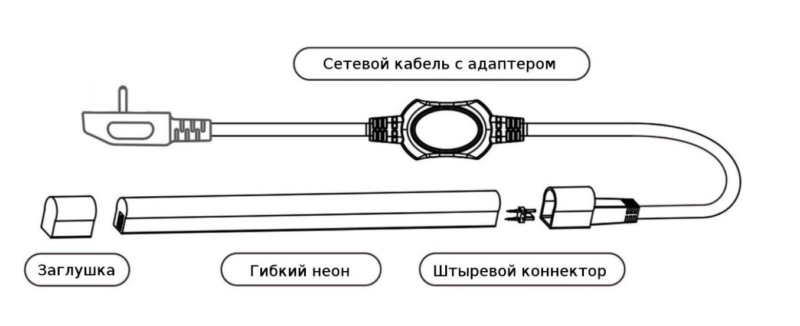
The wiring diagram consists of the elements:
- a flexible neon of the desired power and shade;
- a power cable with an adapter;
- Pin-type connector for a reliable connection;
- plugs to protect the circuit.
There may be other elements that somehow affect the functionality of the light and its performance.
How to connect and attach
The fixing of flexible neon is realized by means of holders, profiles or brackets. Some methods are suitable for creating curvilinear systems, while others provide a secure rectilinear fixation. The choice of technique depends on what kind of construction you want to get as a result.
Rectilinear Installation
To install flexible neon in a straight line, you will need to purchase or make a guide profile. Profiles are fixed on the surface with screws in increments of 25 cm.
They are made of different materials: polymer, stainless alloys with minimum conductivity.
Curved installation
Curvilinear installation is carried out with the help of staples or in a pre-calculated groove sealed with sealant. It is better to fix the brackets on the surface with screws or self-tapping screws.
The sealant or silicone in the second case should be as neutral as possible so that the surface of the tubes does not change its properties during operation.
Safety and operating rules
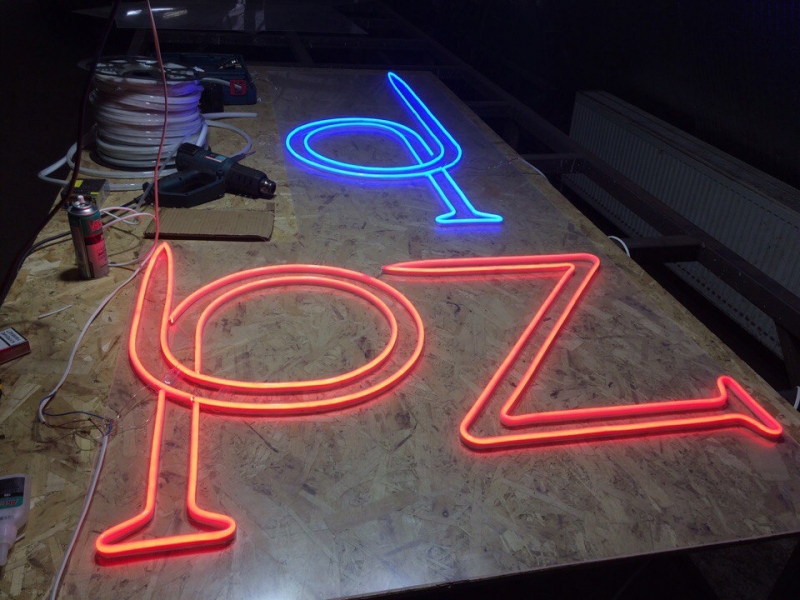
The following rules should be observed when installing flexible neon:
- Before installing the element, completely disconnect the power supply.
- Before applying voltage to the circuit, make sure the system is tight and there are no exposed wires.
- Installation or repair of flexible neon should be performed only after reading the instructions.
- If a particular model is not designed for high humidity, it must be protected from exposure to water.
- Modern neon lights can operate at temperatures ranging from -10 to +40 degrees Celsius.
- When installing, minimize mechanical influences on the design. Neon should not be bent, twisted or deformed in any way.
- Neon coiled may be plugged in for no more than 1 minute to check. Otherwise overheating or short circuits can occur.
- The base for a flexible construction should be a rigid surface.
- It is not recommended to hang additional load on the structure in the form of signs or objects.
If at the stage of transportation or preparation the neon wire got wet or dirty, it must be thoroughly cleaned and dried before installation.
During the assembly process, it is advisable to use only original cables and connection connectors. They are most often supplied as a complete assembly, but compatible items are available as an option.
A maximum of 50 meters of flexible neon can be connected to the network. In this case, the power will be evenly distributed over the diodes, which will ensure proper operation of the equipment.
Sealing requires a quality and neutral sealant that is compatible with PVC materials and silicones.
It is forbidden to cover the working wiring during operation. It is also not recommended to install the light in an enclosed space or to place the tubes too close together. Safe use of the system requires constant air circulation.
Advantages and disadvantages

Flexible neon, like other devices, has advantages and disadvantages. The highest quality are considered professional linear illuminators that bend in any direction.
The main advantages of the elements are:
- uniform glow along the entire length;
- high brightness;
- a scattering angle of 360 degrees with round tubes and 180 degrees with rectangular tubes;
- use of different types of decor;
- wide choice of tube sections;
- possibility of cutting into separate sections;
- high quality protection from dust and moisture allows the tubes to be used even underwater;
- easy carrying;
- easy assembly;
- flexible design allows you to create any shapes or patterns;
- resistance to mechanical stress, shock and vibration;
- minimum risk of short circuits;
- environmental purity of materials;
- cold neon does not emit ultraviolet radiation, detrimental to humans;
- relatively low power consumption;
- great resource;
- pleasant appearance.
Unfortunately, not without disadvantages:
- a significant amount of dust is deposited on the surface of the tubes and regular cleaning is recommended for quality use;
- the lack of power does not allow the use of flexible neon as the main source of lighting.
